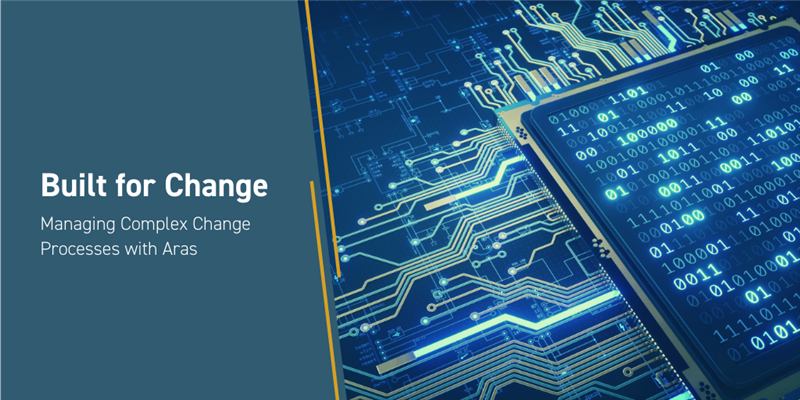Engineering changes often require more than one team—as we saw in our last blog, Connecting Change Management and Quality with Aras. In this brief, 3-minute video, you’ll see how sub-workflows in Aras Innovator can meet that need. And, you’ll see an overview of the complete set of CM2-compliant change processes, built into Aras Innovator, for your teams to choose from and easily configure to meet your change process needs, however complex or simple they may be.
Why use sub-workflows? Even when the initial problem has advanced to review, has been investigated by the quality team with a full Corrective Action Plan, and is ready to be addressed with a carefully orchestrated Engineering Change Order process, different parts of the same change may still need to be completed by different teams—like a part change managed by engineering and a document change managed by a technical documents team.
Every change item in Aras innovator is transparent, structured, documented, automated, and configurable. Let’s see how.
Transparent Change: Impact Matrix
What objects in your system will the change impact? Add them one-by-one during the process of generating a change object, or add them by starting with the item you wish to change and attaching it to an existing or new change object in the system. Children of parent items will automatically be included in the Impact Matrix, which is visible from the change object and includes the full list of affected items, with the hierarchical relationships between them represented as a collapsible list. Navigate between the “before” and “after” states of the parts under change, and view redlining on the Bill of Material for the part to see what changed. Aras is built for change, and it’s easy to navigate “round trip” from the affected items to the change and back again, to fully investigate the change and make sure it’s right.
Structured Change: Workflow Engine
Choose any change item in Aras Innovator and take a look at the Workflow action. Here, a straightforward, easily interpretable map of the change process tracks every user identity or role responsible for some step in the change process. Each change item is compliant out-of-the-box with the CM2 standard for Change and Configuration Management, with roles predefined for your admin to populate with your teams. Or, easily adjust the workflows to meet your needs. Multiple identities or roles can be required for sign-off, with voting weights given to each. With each sign-off, the change object is automatically forwarded to the next role by the system, creating a repeatable, structured process that ensures every engineering change follows the path required by your internal processes.
Documented Change: Audit Trail
Every sign-off at each step in the change process is captured, and viewable, automatically. E-signatures can be required, comments offered, and other easily configurable steps that can appear in the audit trail. No extra effort by the user or administrator is required to capture an entire history of the change process and demonstrate compliance with internal processes or external industry requirements: they are captured by the tool and viewable by anyone with permissions.
Automated Change: Sub-Workflows
In the video example, an EDR, or Engineering Document Review, is connected to the ECO, or Engineering Change Order, as its sub-workflow. This means that release of the EDR is contingent upon release of the ECO. In our example, every human in the system had signed off on the EDR; however, the EDR is not advanced to the “released” state until the ECO is released. Instead, the system automates the release of the EDR upon release of the ECO, with no further human intervention required. Sub-workflows help to ensure the concurrent release of related items, so no change escapes into your digital ecosystem until it should. In our example, the change to the drawing (under the EDR) is only released when the part change (under the ECO) is released, even though two different teams—with two distinct workflows for reviews and approvals—had to review, implement, and approve each change independently.
Configurable Change: CM2-Compliant Change Objects
Upon delivery, Aras Innovator offers a host of CM2-compliant change objects, including Document Change objects, Engineering Change Requests, Engineering Change Notifications, and the ECO and EDR mentioned above. Each of these can easily be configured to match the business processes you already use. The software is highly flexible, with a low-code / no-code administrator experience, to meet your teams’ needs—not the other way around. Address your teams and their roles; your review, edit, approve, and reject cycles; voting weights and required signatures according to your steps; and sub-workflows that match your needs, all via easy software configurations: no customization required.
The final step in this video shows that reporting against change objects in Aras is easy. On delivery, Aras Innovator includes built-in reporting to track changes, their statuses, priorities, owners, affected items, and more; or, users and administrators can easily build their own reports. Check out the two earlier videos in this series, on Managing Formal and Informal Change Processes in Aras and Connecting Engineering Change and Quality in Aras. Or, learn more in the recent Aras Innovator Demo Series, Optimizing Your Product Development Process with Collaborative Change Management.

